Discover 20 hidden attractions, cool sights, and unusual things to do in Parkersburg (United States). Don't miss out on these must-see attractions: Smoot Theatre, Blennerhassett Island Historical State Park, and St. Francis Xavier Church. Also, be sure to include Henry Logan Memorial AME Church in your itinerary.
Below, you can find the list of the most amazing places you should visit in Parkersburg (West Virginia).
Table of Contents
Smoot Theatre
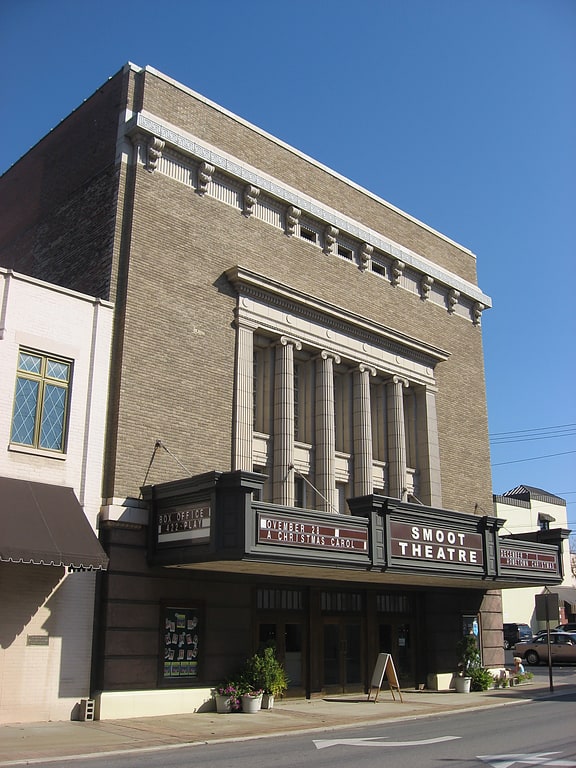
Theater in Parkersburg, West Virginia. The Smoot Theatre is a historic vaudeville house and movie theater located in Parkersburg, Wood County, West Virginia. It was built in 1926, and is a brick and terra cotta building with a simple Classical style front. It features a Greek key cornice and a second story inset with four fluted columns in antis.
It was listed on the National Register of Historic Places in 1982.[1]
Address: 215 5th St, 26101-5103 Parkersburg
Blennerhassett Island Historical State Park
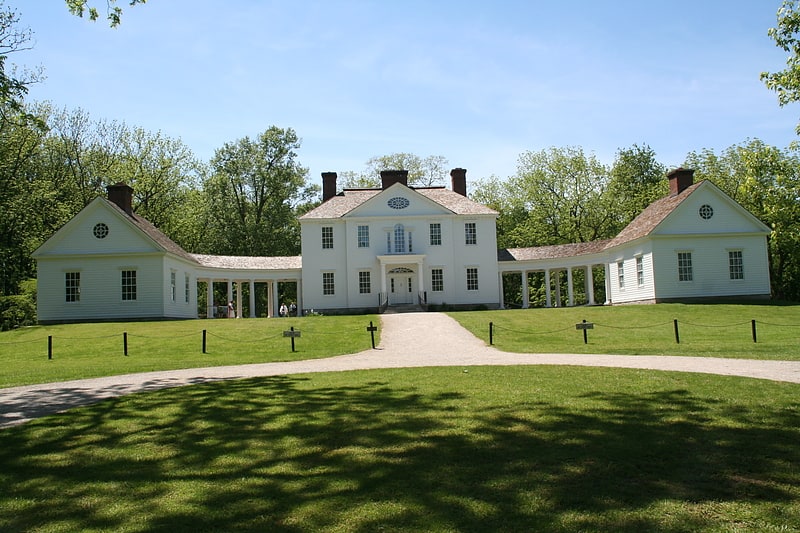
State park in Wood County, West Virginia. Blennerhassett Island Historical State Park is a state park located on Blennerhassett Island, a small island in the Ohio River, located in Wood County, West Virginia, USA. The property was the site of a Palladian mansion owned by Harman Blennerhassett, a participant in some of the alleged intrigues of Aaron Burr, and his wife Margaret Agnew. While the original mansion burned to the ground in 1811, a detailed replica, which can be toured, was built on its foundations in the 1980s. The Blennerhasset mansion greatly resembled George Washington's Mount Vernon, due to its Palladian style.
The park is accessed via sternwheeler riverboat from Point Park on 2nd Street in Parkersburg, West Virginia. The riverboat ride takes about 20 minutes each way.[2]
Address: Ohio River, 26101 Parkersburg
St. Francis Xavier Church
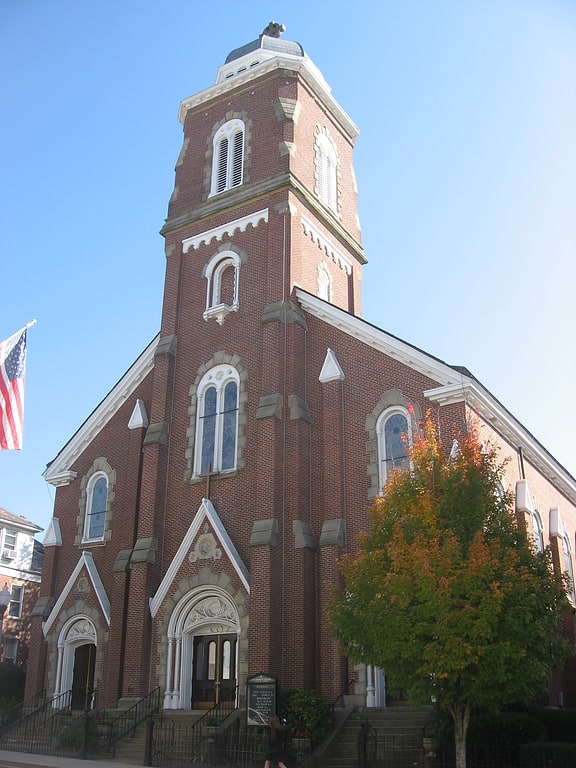
Church in Parkersburg, West Virginia. St. Francis Xavier Church is a historic church at 532 Market Street in Parkersburg, West Virginia.
This church was built in 1869 and added to the National Register of Historic Places in 1978. St. Francis Xavier is one of the four original churches of the Diocese of Wheeling. St. Xavier is also the oldest church building in Parkersburg. The church was completed and dedicated on October 2, 1870.[3]
Address: 532 Market St, 26101 Parkersburg
Henry Logan Memorial AME Church
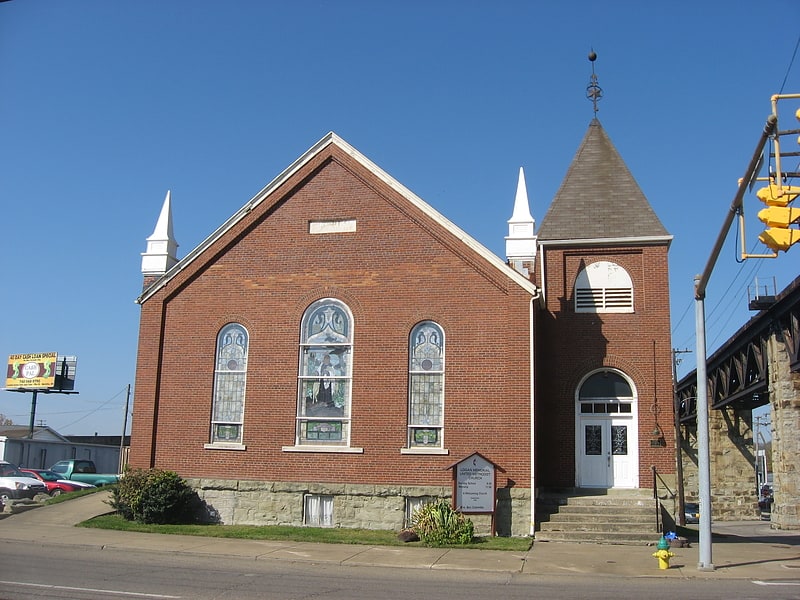
Building in Parkersburg. Henry Logan Memorial African Methodist Episcopal Church is a historic African Methodist Episcopal church at Ann & 6th Streets in Parkersburg, Wood County, West Virginia. It was built in 1891, and is a brick and stone church building in a vernacular Romanesque style. It features three round arched stained glass windows on the front facade and a square, pyramidal roofed corner tower.
It was listed on the National Register of Historic Places in 1982.[4]
Address: 527 Ann St, 26101 Parkersburg
Smith Building
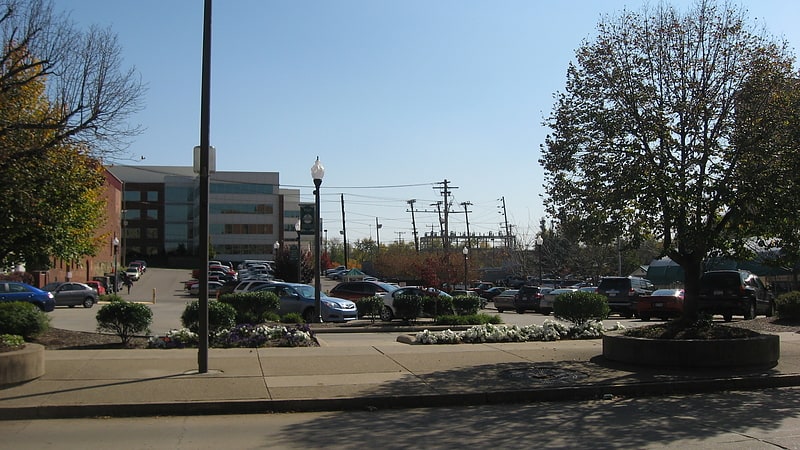
Historical landmark in Parkersburg, West Virginia. Smith Building was a historic commercial building located at Parkersburg, Wood County, West Virginia. It was built in 1898, and is a three-story, 18 bay, brick building. It featured corbeled hanging buttresses at the corners and curved brickwork. It once housed a bowling alley, but storefronts later occupied the first floor.
It was listed on the National Register of Historic Places in 1982.[5]
Parkersburg Bridge
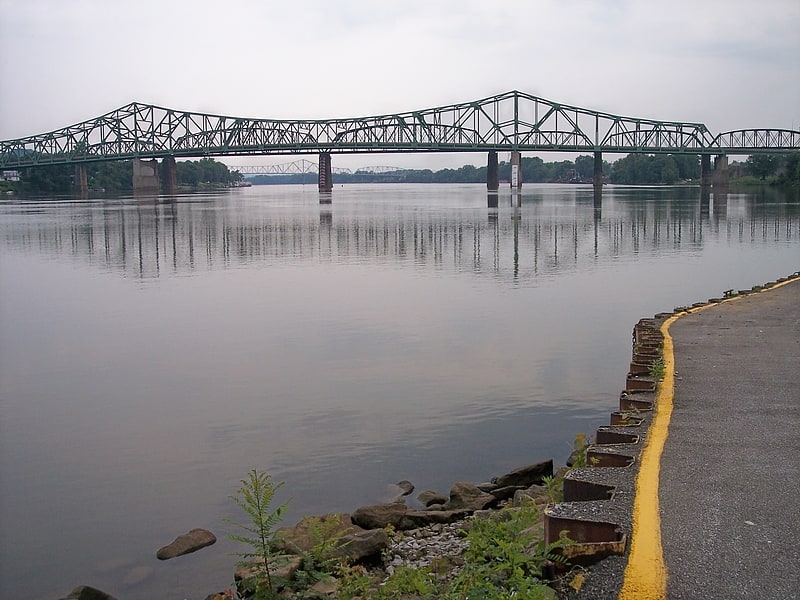
Truss bridge in Parkersburg, West Virginia. The Parkersburg Bridge crosses the Ohio River between Parkersburg, West Virginia, and Belpre, Ohio. Designed by Jacob Linville, the bridge has 46 spans: 25 deck plate girder, 14 deck truss, 6 through truss, and 1 through plate girder. 50,000 cubic yards of stone were used for the 53 piers. The bridge was constructed from May 1869 to January 1871 by the Baltimore and Ohio Railroad. At the time of its completion, the bridge was reportedly the longest in the world at 7,140 feet.
The approach spans were replaced 1898–1900, and the river spans were replaced 1904–1905. The original piers were retained. The steel structure atop the piers was rebuilt between about 1914 and 1917. One channel span was replaced in 1972 after a barge transporting an empty gasoline tanker exploded under the bridge.
The bridge was a part of the B&O's Baltimore – St. Louis mainline and offered the railroad easy access to Ohio in transporting coal and other materials to the east coast. Currently the bridge handles traffic on CSX Transportation's Marietta Subdivision.
It was listed on the National Register of Historic Places in 1982 under the name Sixth Street Railroad Bridge. At the time of the listing, the bridge was still owned by the Baltimore and Ohio Railroad.[6]
Memorial Bridge
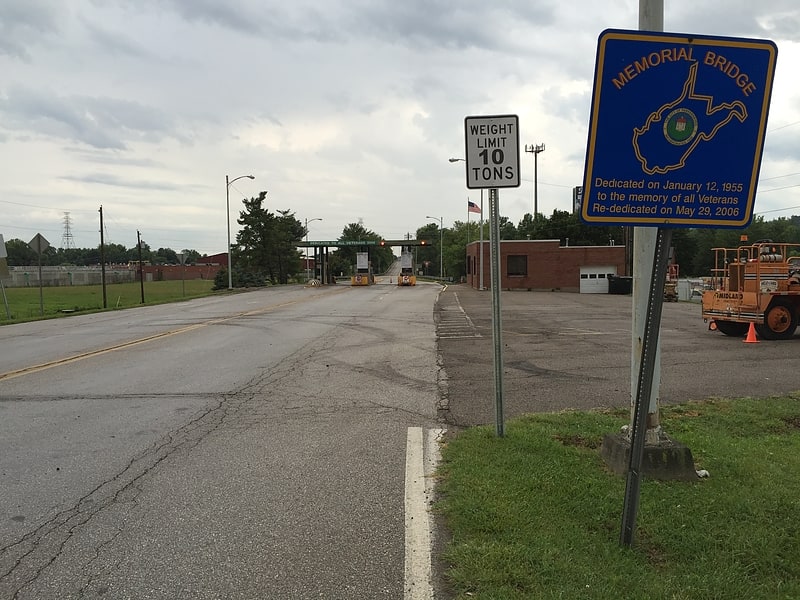
Truss bridge in Parkersburg, West Virginia. The Memorial Bridge, locally known as the toll bridge, crosses the Ohio River connecting Belpre, Ohio and Parkersburg, West Virginia. The bridge is an alternate route to access U.S. Route 50 in Ohio from central Parkersburg.
While some internal WVDOT documents refer to the bridge as West Virginia Route 140, the number is not signed nor shown on state-issued maps.
The bridge was completed c. 1954, and is of a steel through truss design, a combination of two camelback-Warren through trusses, and a 3-span cantilevered Warren through truss. It accommodates two lanes of traffic, one in either direction.
This bridge has a toll for passenger cars of $0.50; travelers may also purchase tickets to reduce the toll from $0.50 to $0.40 per trip when $2.00 worth are purchased. There are no automatic lanes and E-ZPass is not accepted.[7]
Address: 5th St, 26101 Parkersburg
Parkersburg–Belpre Bridge
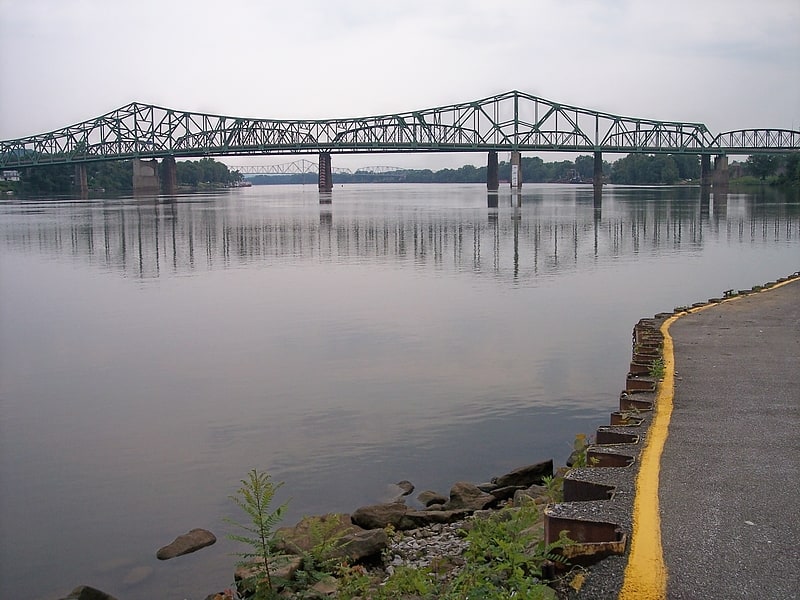
Cantilever bridge in Parkersburg, West Virginia. The Parkersburg–Belpre Bridge is a four-lane cantilever bridge that connects Parkersburg, West Virginia to Belpre, Ohio across the Ohio River. The bridge was completed in 1980. The bridge had been signed U.S. Route 50 until June 13, 2008, when that highway was re-routed to the Blennerhassett Island Bridge a few miles to the west, as part of the completion of the Corridor D project around Parkersburg. The American Discovery Trail uses the bridge to cross the Ohio River.[8]
Bethel AME Church
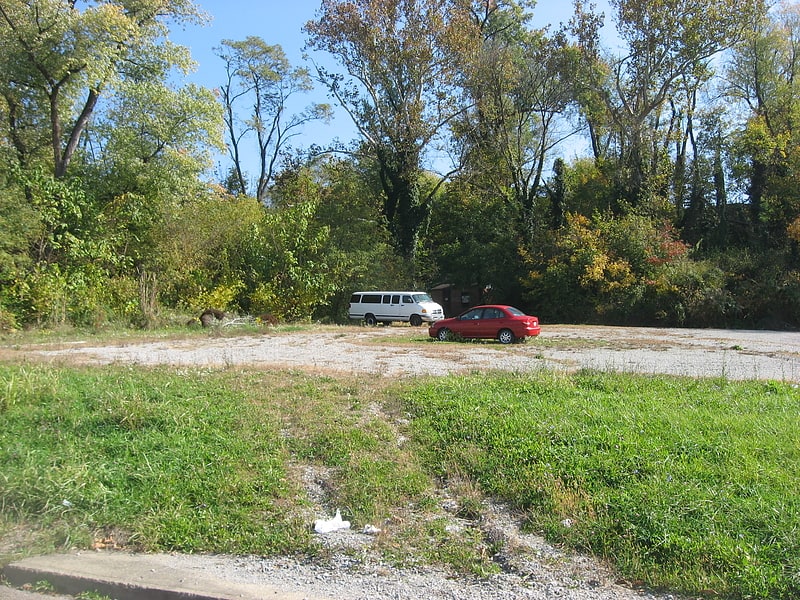
Episcopal church in Parkersburg, West Virginia. Bethel African Methodist Episcopal Church was a historic African Methodist Episcopal church located at 820 Clay Street in Parkersburg, Wood County, West Virginia. It was built in 1887, and was a two-story, stucco building in a vernacular interpretation of the Gothic Revival style. It was one of three black churches in Parkersburg and is the oldest black church building in west central West Virginia. The church was located in a neighborhood of late 19th-century wood-frame houses only a block from downtown.
It was added to the National Register of Historic Places in 1998. It is presumed to have been demolished or moved since then.[9]
Oakland

Home in Parkersburg. "Oakland," also known as the James M. Stephenson House, is a home located in Parkersburg, Wood County, West Virginia. Although a slaveholder and sympathizing with the Confederacy, Stephenson was also married to the sister of Unionist Arthur Boreman, and allowed then Union Army Col. James B. Steedman to use his grove nearby during the American Civil War. However, Union cavalry units occupied this his mansion for a time nonetheless, and damaged furnishings as well as the home and garden.
It was built in 1840, and is a two-story, "L"-shaped, red brick house in the Greek Revival style. It features a low hipped roof with cupola and a single bay, one-story portico with paired, fluted wooden Doric order columns. It was listed on the National Register of Historic Places in 1979. It was donated to the WVU Parkersburg Foundation in 2015.[10]
Julia-Ann Square Historic District
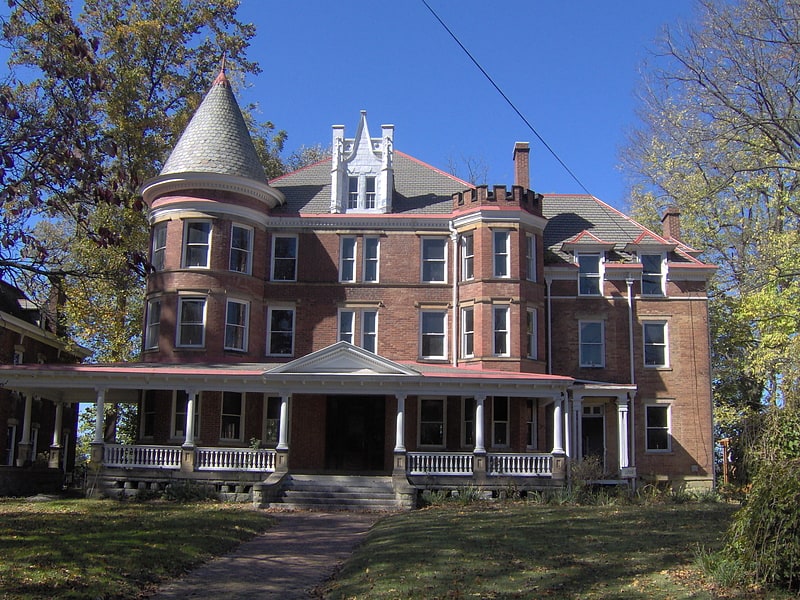
Historical place in Parkersburg, West Virginia. The Julia-Ann Square Historic District, is a national historic district located at Parkersburg, Wood County, West Virginia. It is to the west of the Avery Street Historic District. It encompasses all houses on Ann and Juliana Streets from Riverview Cemetery to 9th Street. There are 116 contributing buildings and one contributing site. The majority of the houses were constructed between 1875 and 1915.
The district was added to the National Register of Historic Places in 1977, with architecture styles being listed as late Victorian architecture and Colonial Revival architecture. Many notable examples of Queen Anne architecture can be seen in the neighborhood as well.
One notable dwelling is the Van Winkle-Wix House. It was built in 1836 by Peter Van Winkle in what was at the time a portion of western Virginia. The building has undergone many changes since being initially constructed as a two-story residence, with most coming in the years 1875–1899. The third floor and the north wing as well as the turrets and spires were all added through the years. Additionally, the entrance, which originally faced Murdoch Avenue to the west, was reversed to face Ann St, as it currently does.
The Peter G. Van Winkle House, whose site remains separately listed on the National Register of Historic Places at 600 Juliana Street.[11]
House at 10th and Avery Streets
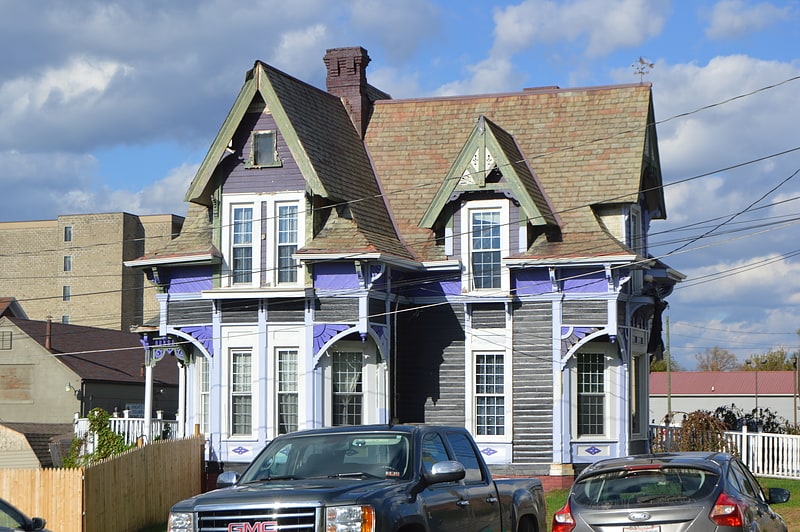
Building in Parkersburg, West Virginia. House at 10th and Avery Streets is a historic home located at Parkersburg, Wood County, West Virginia. It was built between about 1860 and 1879, and is a two-story, frame house in the Eastlake / Carpenter Gothic style. Its roof has a complex composition of hips and gabled wall dormers, pierced by two brick chimney. The house features sawn woodwork that make it the most highly ornamented residential building in downtown Parkersburg.
It was listed on the National Register of Historic Places in 1982.[12]
Address: 1126 Avery St, Parkersburg
Wood County Courthouse
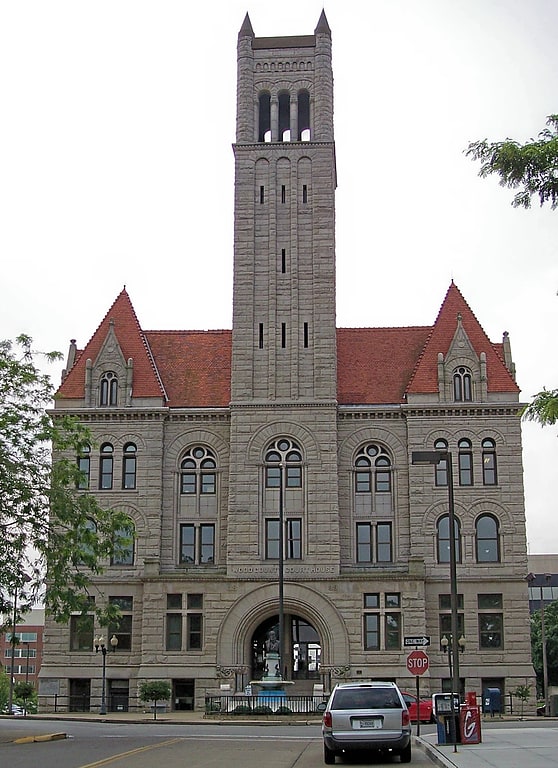
Building in Parkersburg, West Virginia. The Wood County Courthouse is a public building in downtown Parkersburg, West Virginia, in the United States. The courthouse was built in 1899 at a cost of $100,000 in the Richardsonian Romanesque style by local contractors Caldwell & Drake, according to the plans of architect L. W. Thomas of Canton, Ohio. The current courthouse is the fifth to be built in the county replacing one built in 1860. It was added to the National Register of Historic Places in 1979 for its architectural significance. During his 1912 presidential campaign Theodore Roosevelt stopped in Parkersburg and spoke from the Market street entrance of the courthouse. On 2 July 2020 a new steeple was added to the bell tower replacing one that had been removed in 1952. With the new steeple the courthouse is now the tallest in the state at 164 ft.[13]
First Baptist Church
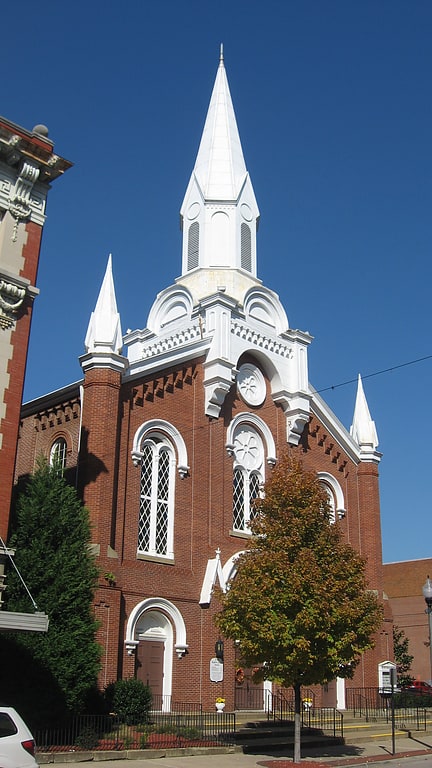
Church in Parkersburg, West Virginia. First Baptist Church is a historic Baptist church at 813 Market Street in Parkersburg, Wood County, West Virginia. It was built in 1871, and is a two-story, three by six-bay, brick church in the Italianate style, which was popular at the time. It has a central steeple on the front facade and several rear additions. It is topped by a gable roof trimmed by an arched corbel table and corner turret. This congregation was founded in 1817 and built their first church in 1837. First Baptist was built on that site.
It was listed on the National Register of Historic Places in 1982, and it is a contributing property to the Avery Street Historic District, which was designated and listed on the National Register in 1986.[14]
Address: 813 Market St, 26101-4630 Parkersburg
First Presbyterian Church
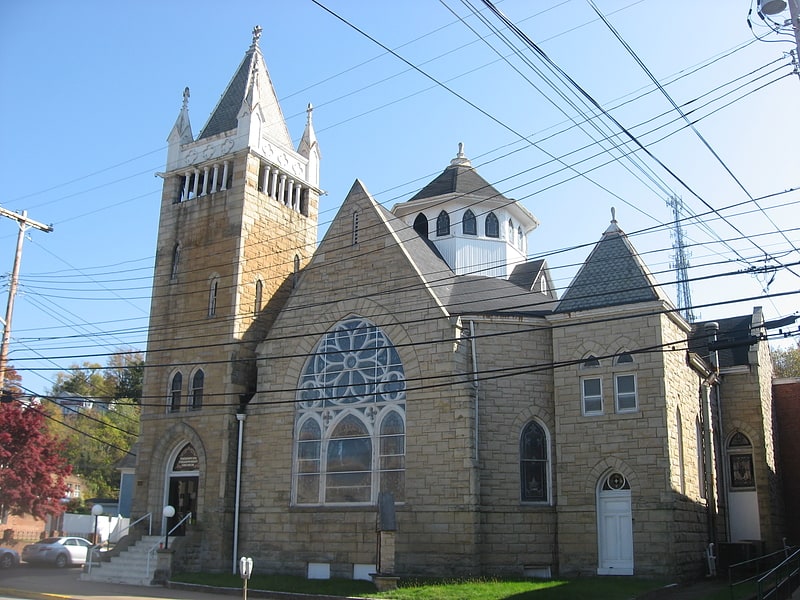
Church in Parkersburg, West Virginia. First Presbyterian Church, also known as the Calvary Temple Evangelical Church, is a historic church at 946 Market Street in Parkersburg, Wood County, West Virginia. It was built in 1894, and is a two-story, brick and stone church building in a combined Romanesque / Gothic Revival style. It features a corner bell tower.
It was listed on the National Register of Historic Places in 1982, and it is a contributing property to the Avery Street Historic District, which was designated and listed on the National Register in 1986.[15]
Jackson Memorial Fountain

Historical landmark in Parkersburg, West Virginia. Jackson Memorial Fountain is a historic fountain located at the entrance to City Park at Parkersburg, Wood County, West Virginia. It was built in 1905 and is a cast iron structure that originally had three tiers. The second tier is topped by Parkersburg's Lady of the Lake statue. It features elaborately sculpted and decorated basins and pedestals. The fountain is dedicated to the locally prominent Jackson family, that included General John Jay Jackson and his sons Federal Judge John Jay Jackson, Jr. Governor Jacob B. Jackson, and Circuit Judge and Congressman James M. Jackson.
The fountain was destroyed in an October 2018 storm, but a replica was erected in 2020.
It was listed on the National Register of Historic Places in 1984.[16]
Henry Cooper House
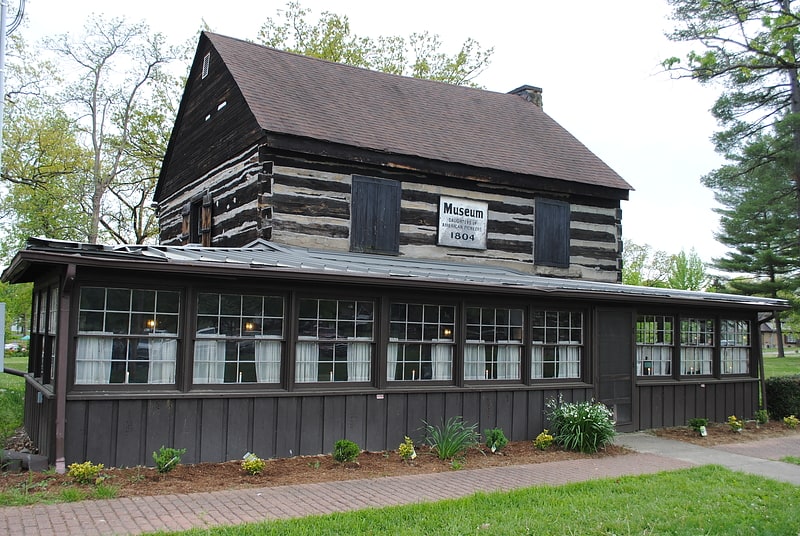
Museum in Parkersburg, West Virginia. Henry Cooper House, also known as The Daughters of American Pioneers Museum and Cooper Cabin, is a historic home located at Parkersburg, Wood County, West Virginia. The log cabin was erected in Slate District, Wood County, in 1804, by Henry Cooper, and is believed to be the first two-story log cabin in Wood County. In August 1910, the City of Parkersburg purchased the structure for $400. After being dismantled, the house was rebuilt in the Park in September 1910. In 1911, title was granted by the City Council to the Centennial Chapter - Daughters of American Pioneers. The cabin is open as a museum.
It was listed on the National Register of Historic Places in 1986.[17]
Fort Boreman
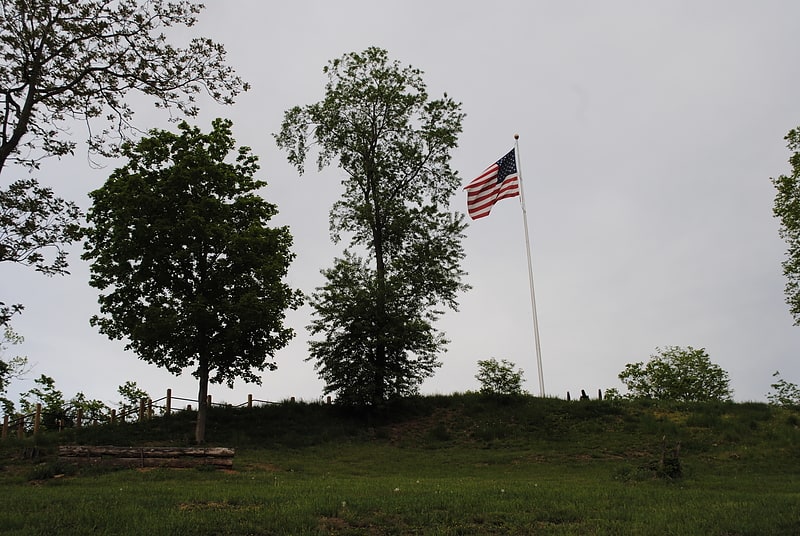
Park in Parkersburg, West Virginia. Fort Boreman is a historic archaeological site encompassing a Civil War fortification located near Parkersburg, Wood County, West Virginia. It was built in 1863, by Company A of the 11th West Virginia Volunteer Infantry Regiment. It is a series of paired, approximately four foot deep trenches encircling the top of the hill in a zigzag pattern. It was originally built to ensure that the Baltimore and Ohio Railroad link between Wheeling and Parkersburg was not severed or commandeered by the Confederate army. The fort was named after Arthur I. Boreman, West Virginia's first Governor.
It was listed on the National Register of Historic Places in 2002.[18]
Trinity Episcopal Church
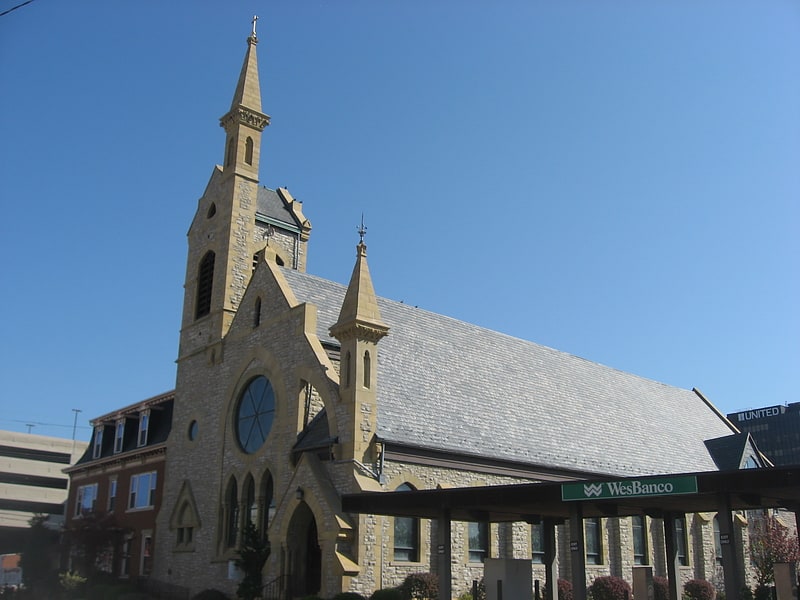
Church in Parkersburg, West Virginia. Trinity Episcopal Church is a historic Episcopal church located in Parkersburg, Wood County, West Virginia. Records indicate that Episcopal services were conducted as early as 1815 by itinerant clergymen, but there was not a building so services were conducted in the county court. In 1843, the Rt. Rev. Wm. Meade, Bishop of Virginia, sent the Rev. Tho. Smith to be the vicar of a small congregation. The church property was given by John Snodgrass, a member of congress from this district. The first church's building began in 1846, and Rev. Smith died at age 48, before its completion. He was buried, by his request, under the front steps. He felt he was "a poor sinner and wanted to be trampled under the feet of all who entered." The first church was completed in 1850, with the rectory built in 1863, and occupied until 1919, when it was turned into office buildings and Sunday school rooms. The old church was torn down in 1878, and the present building completed and consecrated in 1879. The church's foundation stones come from Quincy Hill quarry. In 1913, the church was flooded and pews were taken up and stored higher, but the organ, furnaces and floor was destroyed. Another flood occurred in 1937, however, this one was not as severe, yet the pews were replaced.
Trinity Hall was built in 1881, financed by children via plays and bake sales, with the cost totaling $750.
It was listed on the National Register of Historic Places in 1982.
Trinity Episcopal Church is locally renowned for the annual used book sale held each fall by its ECW (Episcopal Church Women). They are also well known for their Monday feeding ministry where they feed between 120 and 170 meals each Monday between 11:00 AM and noon.[19]
Address: 430 Juliana St, 26101 Parkersburg
Trinity Episcopal Church Rectory

Building. Trinity Episcopal Church Rectory is a historic church rectory at 430 Juliana Street in Parkersburg, Wood County, West Virginia. It is joined to the Trinity Episcopal Church located at 424 Juliana St. by a newer wing It was built in 1863, and is a 2+1⁄2-story, painted brick building in the Second Empire style. It features a concave profile mansard roof.
It was listed on the National Register of Historic Places in 1982.[20]